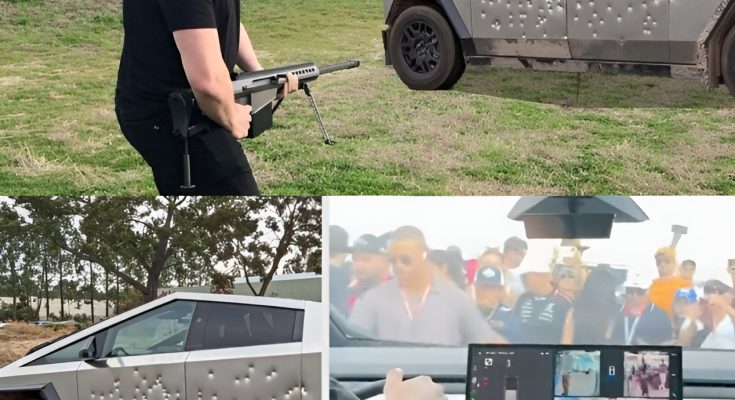When Tesla’s CEO Elon Musk unveiled the Cybertruck in 2019, the vehicle’s angular design, advanced features, and promise of unbreakable “Armor Glass” captured global attention. Among the bold claims made by Musk was the assertion that the Cybertruck’s stainless steel body could withstand bullets. While this statement added to the vehicle’s mystique, it also raises serious concerns regarding its implications and the messaging around safety.
During the Cybertruck’s launch, Musk highlighted the strength of its ultra-hard, 30X cold-rolled stainless steel exoskeleton. He emphasized its ability to endure sledgehammers, high-impact collisions, and even bullets from small firearms. The demonstration of the vehicle’s durability included sledgehammer strikes to its body, showcasing minimal damage. However, the infamous “unbreakable glass” test, which saw a metal ball shatter the window, served as a reminder that bold claims can sometimes falter in execution.
This narrative of a “bulletproof” Cybertruck is problematic on several fronts. First, it risks misleading potential buyers into believing the vehicle offers military-grade protection, which it does not. The material’s strength may resist certain impacts, but it lacks the certification to meet ballistic protection standards. Misunderstandings about the truck’s capabilities could encourage reckless behavior or give users a false sense of security in dangerous situations.
There are also ethical and legal concerns tied to such claims. Marketing a civilian vehicle as bulletproof without clear qualifications could result in regulatory scrutiny or legal challenges, particularly in regions with strict advertising guidelines. It also raises moral questions about whether promoting such a feature is responsible, especially if it fosters a sense of invulnerability or appeals to individuals with intentions to misuse the vehicle.
In practical terms, the Cybertruck’s stainless steel exterior may resist low-caliber rounds, but focusing on this feature detracts from the truck’s primary strengths—its environmental benefits, innovative design, and technological advancements. Overemphasizing a “bulletproof” narrative risks overshadowing Tesla’s efforts to position the Cybertruck as a groundbreaking product in the electric vehicle market.
To address these concerns, Tesla should clarify the limitations of the Cybertruck’s bullet-resistant properties in its communications. The company could also shift its marketing focus to highlight the vehicle’s core strengths, such as its electric drivetrain, towing capacity, and unique design, while promoting responsible use. Transparency in these aspects would ensure that the Cybertruck is celebrated for its innovation without creating unrealistic expectations or compromising user safety.
While Elon Musk’s flair for dramatic announcements often generates excitement, suggesting that the Cybertruck is bulletproof is reckless. Clearer messaging and responsible marketing are essential to maintain trust and uphold Tesla’s reputation as a leader in innovation. By addressing these concerns proactively, Tesla can ensure the Cybertruck’s legacy is built on its true strengths rather than overstated claims.


